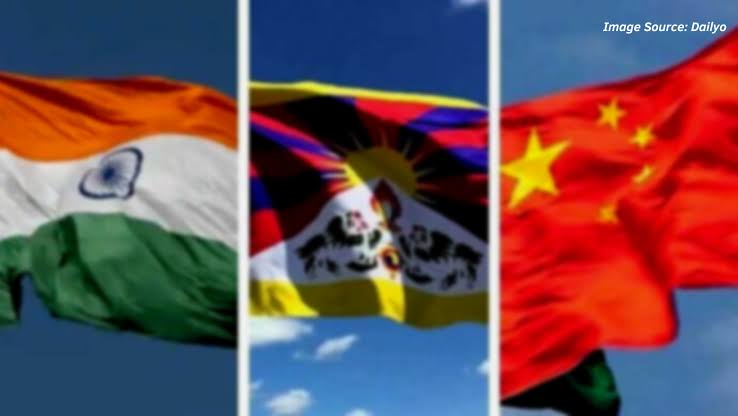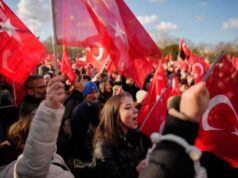China should demarcate the China Tibet International Border to boost ties with India

Twenty six hundred years ago, Hiuen Tsang, also known as Xuanzang, a Chinese monk scholar, traveller, and translator, travelled from China to India to obtain Buddhist scriptures during the reign of King Harsha Vardhan. He is best known for his journey to India from 629 to 645 CE. He was aptly helped by Indian Scholars to translate and take back over 657 Indian texts into China. His traveller’s journal provide valuable insights into India’s history, culture, and religion at the time.
On return, soon Hiuen Tsang was revered in China as a great scholar who helped establish the field of Buddhist studies In Ancient China. His writings had a significant impact on the development of Buddhism in China and also Indo Chinese cultural relationship.
Similarly around 100 + years back celebrities in the Chinese cultural community invited Tagore, the famous Indian poet and writer, to visit China, which was a significant event in the cultural circles of both China and India. Tagore’s visit symbolized mutual understanding between the two ancient civilizations and an attempt to establish new ties.
China and India established diplomatic relations quickly after the establishment of the People’s Republic of China. By 1954, the relationship between the two countries had reached its peak, when a joint statement issued by the two countries confirmed the Five Principles of Peaceful Coexistence, creating a new model of international relations.
However, thereafter, the People Liberation Army entered Tibet a free ancient buffer country between the two ancient nations and forcibly captured it. After all Tibet has both Kailash Parvat and Mansarovar lake the abode of Lord Shiva since creation. It has been a place of pilgrimage for Sanatan dharmis since dawn of history.
The Chinese onslaught did not stop there but also engulfed Indian territory in ,Ladakh region of India. Finally to demonstrate its military muscle to the world, it attacked India in both ,Ladakh Sector and Arunachal Pradesh in 1962 and captured more areas in Ladakh.
A Line of Actual Control has since been established. However te salami slicing tactics of PLA continued which finally resulted in the Galwan crisis. Now India has clearly said NO MORE and has matched the PLA deployment man to man.
Naturally cultural exchanges between the two countries which earlier had experienced a bumpy road has now comrpe to a full stop. The situation has been very clear in the past four years. Due to the influence of tense military situation, cultural and people-to-people exchanges between the two countries have been totally disrupted.
India has clearly said that business cannot be as usual, till the boundary problem between China and Tibet and Tibet and India is resolved permanently. Since 2020 more than 21 rounds of military to military talks have been carried out but with little progress.
No wonder Chinese students face challenges in obtaining the necessary visa to study in India. Despite this, India is always ready to restore cultural and think-tank exchanges, provided the borders are marked on maps, ratified, demarcated on ground and settled.
The regrettable situation in the relationship between China and India, especially in terms of cultural and humanistic exchanges, is closely related to China’s aggressive policy the rising of Indian nationalism, revival of Sanatan Dharma in a big way and the Will to protect its national interest.
Against the backdrop of the strategic shift from being a unipolar world to a multipolar world, India has started viewing things with its own perspective and not from any one else’s. India us now using the current period to ensure economic take-off and rise as a great military and industrial power. Therefore, India without hesitating and being apologetic is simultaneously engaging with various countries on equal footing.
Thus India has developed close ties with Russia and BRICS on one hand and developing closer ties with USA and QUAD on the other hand. It has developed close economic relationship with Middle East countries in the West and ASEAN countries in the East.
It has friendly and economic ties with both Iran and USA and both Saudi Arabia and Israel. Most of the African countries are now looking up to India for cooperation in various fields. Philippines and Vietnam have even developed close strategic military relationship.
Everything being promoted by Indian Strategy, is from India’s national interest point if view and not directed against any one else.
However the Indian government has actively taken reciprocal measures wherever required. Thus USA, European and Chinese enterprises in India are not able to have any free run anymore. It has also adopted reciprocal restrictive measures for cultural exchanges and even running and funding of NGO.
The Indian Ministry of Education has decided to review the Confucius Institutes in China and the Confucius Classrooms established by Chinese and Indian universities. In addition, 54 MoUs on intercollegiate cooperation signed by Chinese universities and Indian universities are also under review.
Culturally, now India has started asserting itself as a Vishvaguru, world teacher, once again.
Since last 200 years Europeans have distorted the World history. Now Indians have started questioning it with vigour with facts and figures.
Even China has been contributing in this distortion of History, so it gets annoyed with emerging facts and figures. To point out, last year, the Consulate General of India in Shanghai held an event to celebrate the International Year of Millets 2023.
The Consul General was pleased to introduce seven varieties of millet that had originated in India and was discovered in various Harappa ruins dating back at least 7000 years ago. However, even China has been claiming that the Yellow River Basin in China was the earliest region to cultivate millet, with millet remains unearthed from Cishan in Hebei and Xinglongwa in Inner Mongolia dating back over 7,000 years.
The seven varieties of millet mentioned by Indians are all grown in northern China. Chinese it seems are loath to accept the fact that various agricultural practices and domestication of wild cereals happened both simultaneously and also spread over a long period in various regions of the World.
For the cultural and people-to-people exchanges between China and India to happen, firstly the above stated border problems have to be resolved and the both side should adhere to the principle of equality and reciprocity. Then only cultural and people-to-people exchanges will enhance bilateral relations.




